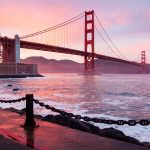Mavericks, located near Half Moon Bay in Northern California, is one of the most iconic and challenging surf spots in the world. With waves reaching up to 60 feet, Mavericks has become a mecca for big wave surfers and a testament to the power of the Pacific Ocean.
In This Article
Key Points
- Mavericks is renowned for its massive waves, which can reach heights of up to 60 feet.
- The surf spot has become a global icon in the surfing community, attracting top surfers from around the world.
- Mavericks plays a crucial role in promoting environmental conservation and sustainable surfing practices.
Understanding Mavericks: Geography and Oceanography
The formation of Mavericks’ legendary waves is a result of the unique underwater topography and powerful Pacific Ocean swells. The waves are generated by a combination of deep water currents, a steep seafloor, and the refraction of swells around the Pillar Point Headland.
The best time to surf Mavericks is during the winter months, typically between November and March, when the swells are at their strongest. However, the conditions at Mavericks are highly variable and dependent on various factors such as tide charts, swell direction, and wind conditions.
The Mavericks Big Wave Competition
The Mavericks Big Wave Competition, also known as the Mavericks Surf Contest, is one of the most prestigious and challenging surfing events in the world. The competition was first held in 1999 and has since become a showcase for the world’s best big wave surfers.
The competition is held only when the waves reach a consistent height of 20 feet or more, and the decision to hold the event is made by a committee of experienced surfers and meteorologists. The contest has seen some of the most memorable moments in surfing history, with surfers like Darryl “Flea” Virostko, Jeff Clark, and Peter Mel etching their names into Mavericks folklore.
Surfing at Mavericks: Challenges and Preparations
Surfing at Mavericks is not for the faint of heart. The massive waves and powerful currents require a high level of skill, experience, and physical fitness. Surfers must be prepared for the mental and physical challenges of riding these giant waves, which can be both exhilarating and dangerous.
To surf Mavericks, you’ll need the right gear. This includes a big wave surfboard, typically ranging from 9 to 11 feet in length, and a thick, high-quality wetsuit to protect against the cold water temperatures. Safety measures, such as wearing a helmet and working with a team of experienced surfers and water safety personnel, are also essential.
Beyond Surfing: Activities and Attractions in Half Moon Bay
While Mavericks is the main attraction for surfers, the Half Moon Bay area offers a wide range of activities and attractions for visitors. The stunning coastline provides opportunities for hiking, fishing, and wildlife watching, while the nearby redwood forests offer a chance to explore the natural beauty of Northern California.
Half Moon Bay is also home to several environmental conservation initiatives, such as the Monterey Bay National Marine Sanctuary and the Half Moon Bay State Beach. These organizations work to protect the local marine life and promote sustainable coastal management practices.
The Mavericks Surfing Community
The local surfing community has played a vital role in the history and preservation of Mavericks. The spot was first discovered by Jeff Clark in 1975, and since then, the community has worked to protect and promote the area as a world-class surfing destination.
The Mavericks community is also actively involved in environmental conservation efforts, working to protect the delicate marine ecosystem and promote sustainable surfing practices. By supporting local businesses and participating in community-led initiatives, visitors can help contribute to the preservation of this iconic surf spot.
Environmental and Safety Considerations
As with any natural environment, surfing at Mavericks can have an impact on the local ecosystem and marine life. It’s essential for surfers and visitors to be aware of their environmental footprint and take steps to minimize their impact.
This includes practicing sustainable surfing habits, such as using eco-friendly surfing products and properly disposing of waste. It’s also crucial to respect local wildlife and avoid disturbing sensitive habitats.
Safety is another key consideration when surfing at Mavericks. The powerful waves and strong currents can be dangerous, even for experienced surfers. It’s essential to follow local safety guidelines, surf with a partner, and always be aware of changing conditions.
Navigating Mavericks: Practical Tips and Insights
To make the most of your Mavericks experience, it’s essential to come prepared. This means studying wave forecasts and tide charts to understand the best times to surf, as well as knowing the best spots for spectating and photography.
Engaging with the local community is also a great way to gain insights and appreciate the history and culture of Mavericks. By supporting local businesses and participating in community events, you can contribute to the preservation of this iconic surf spot and have a more fulfilling visit.
FAQ
What is the best time of year to surf at Mavericks?
The best time to surf Mavericks is during the winter months, typically between November and March, when the swells are at their strongest. However, the conditions can be unpredictable, so it’s essential to monitor wave forecasts and tide charts closely.
How can I participate in or watch the Mavericks big wave competition?
The Mavericks Big Wave Competition is an invitation-only event, with competitors selected based on their experience and skill level. As a spectator, you can watch the competition from the nearby cliffs or via live streaming online. Keep in mind that the event is held only when conditions are optimal, so the exact date is often announced with short notice.
What are the essential items I need for surfing at Mavericks?
To surf Mavericks, you’ll need a big wave surfboard (9-11 feet), a thick, high-quality wetsuit, and safety gear such as a helmet and a personal flotation device. It’s also essential to have experience in big wave surfing and to work with a team of experienced surfers and water safety personnel.
How does Mavericks contribute to environmental conservation?
The Mavericks surfing community is actively involved in environmental conservation efforts, working to protect the local marine ecosystem and promote sustainable surfing practices. This includes participating in beach cleanups, supporting local conservation organizations, and raising awareness about the importance of protecting our oceans.
Are there activities for non-surfers in Half Moon Bay?
Yes, the Half Moon Bay area offers a wide range of activities for non-surfers, including hiking, fishing, wildlife watching, and exploring the nearby redwood forests. Visitors can also enjoy the local cuisine, visit art galleries and museums, and participate in community events and festivals.

